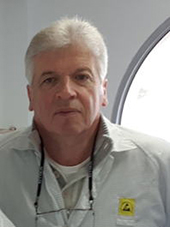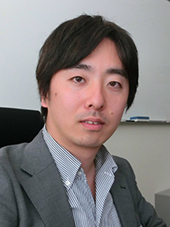Keynote Lectures
Dr. Alexander Veprik (CTO, CRYO TECH LTD, GEVASOL GROU, Israel)
Lecture title: Vibration Free Cryocoolers for High Resolution and Long Range Infrared
Imaging
 |
The cooled infrared detectors of high resolution and long range military and commercial infrared imagers often rely on long life mechanical free-piston Stirling cryogenic coolers, typically containing a compressor
and an expander units interconnected by a flexible and configurable transfer line.
The imbalanced motion of mechanical components inside both compressor and expander generates a low frequency single-tone multicomponent vibration export resulting in a line of sight jitter affecting an attainable imaging performance. The author presents theoretical and practical aspects of using passive lightweight tuned dynamic neutralizers and counter-balancers for essential and cost effective attenuation of a cooler induced vibration in vibration sensitive infrared imagers. Another issue is related to a concept of Integrated Detector Dewar Cryocooler Assembly (IDDCA), where the infrared detector along with a Read Out Integrated Circuitry (ROIC) and a cold shield are mounted directly upon a tip of a thin-walled low heat conductive metal cold finger. Such a mechanical structure appears to be quite susceptive to environmental vibration and shocks, under which it may develop large dynamic responses affecting the imaging quality. The author presents theoretical and practical aspects of using passive wideband dynamic neutralizers for essential and cost effective ruggedizing vibration sensitive components of electro-optical modules. |
Assoc. Prof. Dr Yusuke Miyazaki (Tokyo Institute of Technology)
Lecture title: Biomechanics of traumatic brain injury: influence of time duration of impact
 |
Traumatic brain injury (TBI) occurs in the cases of a variety of impact durations such as traffic accidents, sports accidents, falls and child abuse cases. In addition, the types of traumatic brain injury vary widely,
including concussion, diffuse axonal injury, brain contusion, and acute subdural hematoma. These different types of brain injuries occur depending on the type of accidents. Therefore, to prevent TBI, it is necessary to clarify
how the brain deforms within the skull depending on the duration of the impact. This requires the reconstruction tests of these collision conditions and the identification of intracranial brain deformation. However, conventional
anthropometric test devices (ATD) heads do not have intracranial structure and cannot be evaluated for brain deformation behavior. Therefore, the author has developed a novel human head surrogates and finite element models that reconstruct the shape and intracranial structures of the human head. The authors present the mechanisms of TBI from baseball collisions in sports with shorter impact duration to violent shaking cases with a much longer duration based on the results using the human head surrogates and finite element models. |